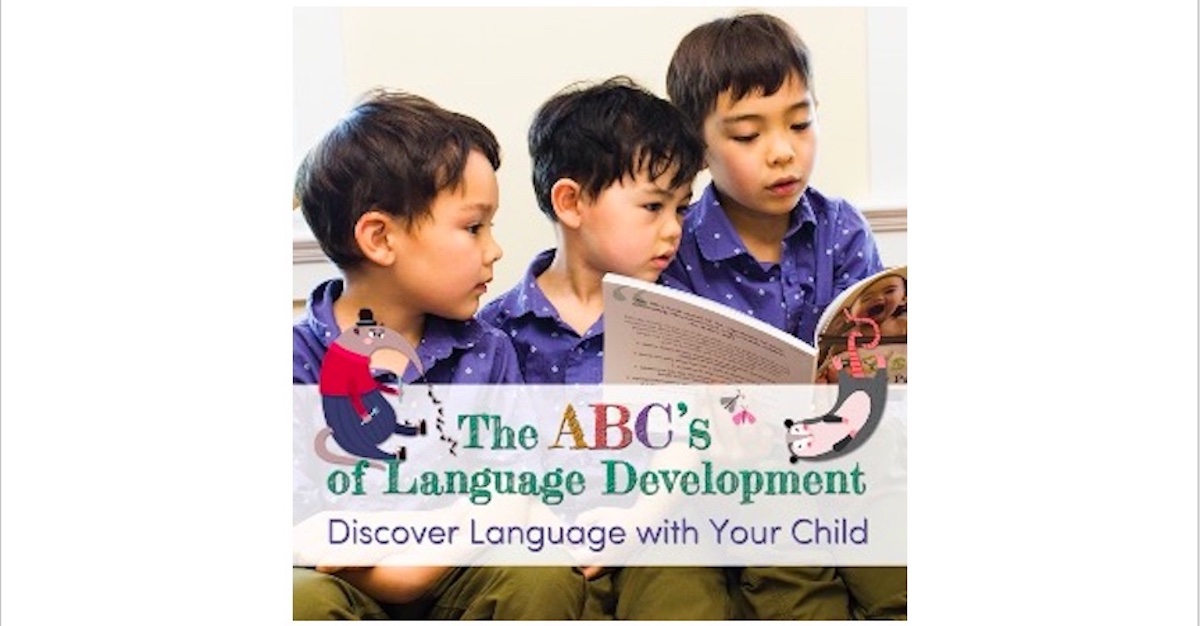While the ABC’s of Language Development provides cutting-edge research and science-backed tips to support the language development of children, what really makes it special is how personal the book has become to the co-authors, collaborators and everyone involved.
The book, which is published in a simple A-B-C format, was co-written by Dr. Carla Hudson Kam, Professor of Linguistics at UBC, and produced by KidCareCanada. Dr. Janet Werker, Co-Director of the Language Sciences Institute at UBC, was the one to first bring the idea to KidCareCanada.

Werker, a former Board member for KidCareCanada, and good friend of the organization’s Founder, Estelle Paget, explained that the idea to create the book was actually just a passing comment in conversation.
“I thought that KidCareCanada’s other book, The ABC’s For New Parents, was such a fantastic book that I half-jokingly told Estelle that it would be so great if sometime KidCareCanada did another book specifically about the ABC’s of language,” said Werker. “That kind of stuck and when Estelle was ready to do that, she reached out to me and I connected her with Carla.”
While the initial planning stages for books often take months, Hudson Kam explained that the planning process for the ABC’s of Language Development happened in a single afternoon thanks to the shared vision and passion of the collaborators.
“I met with some stakeholders and co-authors at Estelle’s house and had this fabulous meeting where, in one day, we came up with ideas for every single letter of the alphabet,” said Hudson Kam. “It was a really good group of people to work with, we all really share a passion for children and have a real desire to see every child develop to their capacity. It was a synergy that worked really well.”

Hudson Kam, who is a researcher with years of experience working in laboratory settings, shared that she was eager to see her work have more of an impact outside of the University and the realm of academia.
“I really wanted to be working on things that weren’t just theoretical, but rather, had a practical application in people’s lives and that actually matter,” said Hudson Kam. “I’ve watched my child develop and collected lots of anecdotes, so it was really nice for me to be able to share my enthusiasm, and also my knowledge, in a way that’s not just with students.”
What really makes the book special is that it’s personal to the authors. Every single photo in the book is of a friend, family member or loved one.
"We know all of the people in the pictures and that makes it even more special,” said Hudson Kam. “There’s pieces of our family in this book and that’s how much we believe in this book. We wanted to include them as well.”
In addition to the personal touches throughout the book, what ultimately brought it all together was the collaborative efforts from the authors and consultants, having different research backgrounds and areas of expertise.
“The confluence of perspectives produced something really special. It’s not just a science book and it’s not just about children with speech-language disorders. It’s about marrying those things together and the outcome of that process is what’s so special,” said Hudson Kam.
The book, which was designed to support parents, caregivers, educators and anyone who supports families and children, provides useful hints, ideas and science-backed information to support language development in young children. It was thoughtfully designed in a simple A-B-C format to allow readers to pick and choose which letters to read and find information relevant to them.
“You can pick a small piece, read just one letter and get some ideas from that letter,” said Hudson Kam. “It was designed that way intentionally so you can take a piece at a time and not feel like you have to read the whole thing. It’s not the kind of thing that progresses where you have to read A before you read B, and so forth.”
A priority for the authors was to make the information accessible to the general public; a challenge that many researchers face when writing for a broad audience.
“It was interesting to think about ways to talk about language development and the science behind it in a way that’s accessible to people that may be interested, but don’t have all the jargon and disciplinary terms,” said Hudson Kam.
Werker explained that the goal is to get the book out into the community as soon as possible, and into the hands of those who can benefit from it the most.
“We want to make sure that we can afford to distribute it to the people who can most benefit from it, so we have this mixed model where those who can afford to purchase it at full-price, will, so that others can get it at cost or even less,” said Werker.
The ABC's of Language Development is available for $27.95 plus shipping and can be ordered here. For non-profits and community organizations, please email language.sciences@ubc.ca to order and receive information about discounted rates.
Written by Kelsea Franzke
